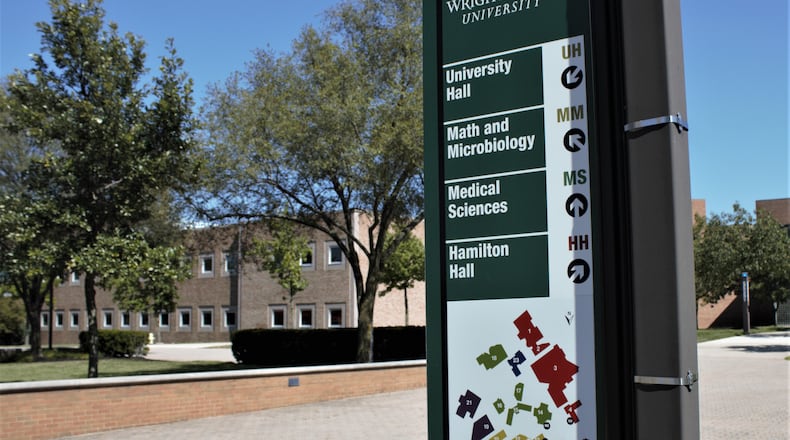Wright State spent more than $1.2 million on legal fees through the Ohio Attorney General’s Office through Oct. 21, according to records obtained from the AG’s office. The money is being spent with Steve Tugend, director of the government affairs practice at the Columbus-based law firm Kegler, Brown and Ritter.
The total budget approved by the state for legal fees in the suit stands at $2.2 million.
“This is a high-dollar, complex lawsuit,” university spokeswoman Nichole Rustad wrote in response to questions from the Dayton Daily News.
She said WSU does not expect to spend anywhere close to $2.2 million.
“The University is seeking at least $9.5M in damages, much of which is attributable to unpaid invoices and assets the University contends it purchased, but that Parallax refused to return following the disaffiliation (including the commercial office building where Parallax is currently headquartered),” she wrote.
Wright State originally sued what was then called Wright State Applied Research Corporation in 2020. The suit alleged WSARC illegally separated from WSU and took state-purchased resources and property, such as Parallax’s multi-million-dollar headquarters on Colonel Glenn highway with it.
WSARC changed its name to Parallax and countersued, accusing the university of interfering with its business and alleging WSU owes Parallax money.
“We look forward to a final resolution of this dispute with WSU, and we are confident that the judge and jury will reach a fair decision,” wrote Parallax spokeswoman Jess Pacheco in response to questions from the Dayton Daily News.
“Parallax and WSU will continue to be key players in the growth of applied research in the Miami Valley. These institutions should be working with each other, not against each other. Resolving this lawsuit will be a welcome first step toward a better working relationship."
Asked about how the litigation is impacting its business, she said: “Parallax continues to thrive and remains focused on delivering innovative solutions for our clients and partners.”
WSARC was at the center of a number of controversies that embroiled WSU nearly a decade ago. The university created the corporation in 2011 as a separate nonprofit to coordinate its research funding. The relationship between the two entities evolved following scandals tied to WSARC around misuse of federal work visas, improper payments to a high-dollar consultant and financial problems.
Parallax CEO Dennis Andersh still has an unpaid $942,700 finding for recovery against him and others issued in 2019 after state auditors alleged improper payments to a consulting group. A finding for recovery is a determination that public money was misspent and prohibits someone from receiving state contracts.
Andersh remains president and CEO of Parallax — paid $369,393 in 2023, according to IRS tax forms — which has multiple state contracts. State officials say this is permitted regardless of the finding for recovery because the contracts are with Parallax, not its CEO.
Asked about the finding, Pacheco said it has no impact on Parallax and nothing to do with the lawsuit with WSU.
“We believe the FFR is invalid, but unfortunately there is no way for Mr. Andersh or the other individuals to challenge it in court. If the state ever tries to collect on it, we are confident that the invalid FFR will be overturned,” she said.
Parallax had $74.6 million in revenue in 2024, according to an IRS audit available through ProPublica’s Nonprofit Explorer. This includes substantial federal grants.
About the Author

